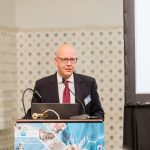Off-the-beaten-track in Central and Northern Portugal
What might travel be like during the recovery period once Covid-19 is under control? Thanks to its aggressive national response to the pandemic, Portugal is providing clues. Native Floridian Sheree M. Mitchell, founder and president of Lisbon-based boutique tour operator Immersa Global, recently completed a two-week trip through Portugal. In this, the last part of a four-part series of Dispatches, she shares what she’s discovered with Essential Business and Travel Weekly readers.
Article kindly submitted by Arnie Weissman, Editor-in-Chief, Travel Weekly
After spending a week exploring the two southern regions of Portugal, the Alentejo and the Algarve, and seeing how hotels and restaurants were managing the new nationwide health and sanitation requirements, I was feeling more comfortable and confident as I headed north.
For the second half of the trip, I decided to focus on the “new normal” for tourist attractions as well as explore unique, off-the-beaten-path places. Based on suggestions from locals, research and my own previous experiences, central and northern Portugal promised to provide all this and more.
My first stop was in Vila Nova de Gaia, the city that sits across the Douro River from Porto. This region serves as the gateway to northern Portugal and the Douro Valley, so an overnight stop was the perfect spot to break up the drive from the south. In Vila Nova de Gaia, I chose the brand new Boeira Garden Hotel since the property was described as “a peaceful garden oasis.”
It was here that I actually decided to try my first “new normal” massage. I was a little skeptical at first until I spoke with the spa director. She explained that clients are screened for Covid-19 symptoms and exposure prior to check-in, both client and therapist wear masks during the treatment and, of course, the rooms are disinfected with Hilton-approved antiviral products between each use. Once I got past all of that, the experience of the full-body massage itself, even when wearing a mask, felt very normal.
Douro Valley
The next stop was the Douro Valley, a Unesco World Heritage Site and Portugal’s most prominent wine region. I stopped by a local winery for a tour and tasting and a two-hour boat ride on the river. When I inquired about what has changed since March, I was told that pre-pandemic, these experiences were available during various times throughout the day but, now that they run with reduced capacity, it must be reserved in advance. Same-household groups, or pandemic pods, can continue to book as normal as long as it complies with the most current Directorate-General of Health’s regulations.
Before leaving the Douro Valley, I decided to visit the Côa Museum, a foundation dedicated to prehistoric rock art found in the nearby Côa Valley. When I arrived, I had lunch with the director, Dr. Bruno Navarro, who spoke about the post-lockdown changes they had to make to reopen. The most notable ones were new machines they had installed in the museum entrance to measure body temperature and dispense hand sanitiser but also, sadly, the disabling of most interactive exhibits. Fortunately for the foundation, none of this seemed to deter people from visiting. The day that I went, both the panoramic restaurant and the huge outdoor terrace were in high demand.
Côa
The visit to the Côa Museum was the perfect introduction for the one-of-its-kind activity later that night: a private trip to the archaeological site to see the Paleolithic rock drawings in person with a local researcher. It was such an amazing experience. Just the two of us with a special flashlight and over 2 million years of drawings — in the very spot where the original artists created them.
The location of my lodging that evening was also unique. I stayed in a bed and breakfast inside Castelo Rodrigo, a charming medieval village less than an hour from the archaeological site.
The last stop in this region was a town on the Portuguese-Spanish border that’s home to Vilar Formoso Frontier of Peace, a museum dedicated to the thousands of Jews who fled to Portugal for safety during World War II. My guide was Dr. Margarida Ramalho, the well-known historian who designed the exhibition in the railroad complex where the refugees had arrived. This, too, was an unbelievable, moving experience.
In keeping with exploring new remote places, my next stop was continental Portugal’s highest mountain, Serra da Estrela, 6,453 feet above sea level. I thought a local tour and a boutique hotel inspired by the region’s wool industry would be perfect. And in theory it was. The challenge (for me) was the drive up the mountain to get to the hotel, which was at an elevation of 4,000 feet. When I learned that the local tour required driving down the mountain and eventually back up to the hotel again, I regrettably had to cancel.
What did I do instead? I sampled regional wine from my stunning balcony while reading about the Burel Factory project. I learned that the owners of the hotel where I was staying, Casa de São Lourenço, actually revitalised the local wool industry upon purchasing a 19th century wool factory (complete with the original machines) and hiring young creatives to master the craft while modernising the brand.
Areias do Seixo
The last stop, Areias do Seixo, 75 minutes northwest of Lisbon, is known for its unspoiled beaches, large open spaces, emphasis on sustainability and upscale accommodations, including glamping. I was able to appreciate all of that, but what I enjoyed the most was the sunset social hour where the owners, staff and guests played music, sang and talked around a bonfire. Social distancing yes, masks no: The bonfire took place outside, where masks are not required in Portugal. I realised that after traveling alone for 14 days (in such a socially awkward environment), it was the first time I truly connected with other travellers which was the perfect ending to the entire trip.
Thanks to Visit Portugal which sponsored the transportation, lodging, meals, cultural activities, and support for this program and also to Sheree Mitchell – Immersa Global, Travel Weekly, Paulo Salvador and Mesa Nacional.










